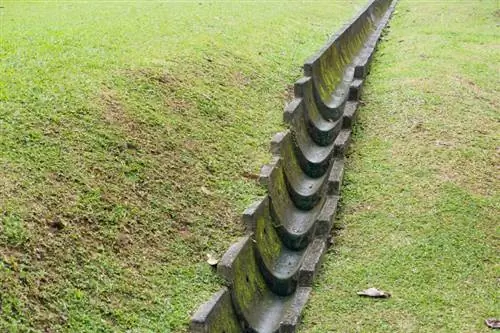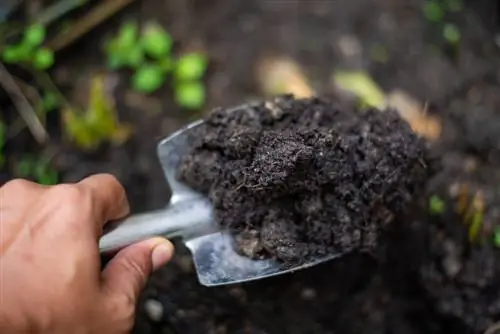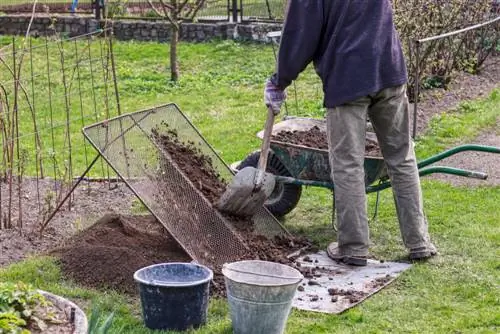- Author admin [email protected].
- Public 2023-12-16 16:46.
- Last modified 2025-01-23 11:20.
If the meadow is damp, this can become a real problem - especially near the house. Damp meadows are often overgrown with moss, which is also a sure indicator that the soil is too acidic. Regular puddle formation in the same places also indicates a lack of permeability in the soil. Here's how to remedy the situation.

How can you drain a wet meadow?
To drain a wet meadow, create drainage parallel to the slope: dig trenches, first fill them with gravel, lay pipes perforated and wrapped in fleece in them, which are placed in a cesspool, a stream or the sewerage system. Cover the pipes again with gravel and a thin layer of earth.
Why is the meadow wet?
The fact that the meadow is wet is usually due to a lack of permeability in the soil. Heavy loamy or clayey soils in particular tend not to allow water to seep away, but instead to accumulate on the surface. This happens especially in meadows that lie in a depression, because here the water cannot even escape to the sides.
How to dry the meadow - what you need to pay attention to
Of course, you first have to be careful not to drain any protected wet or marshy meadows - this requires permission, although the necessary permission is now rarely granted. These meadow species are rare biotopes and are considered worthy of protection. The situation is different, of course, with the damp meadow in front of your house, which of course has to be drained - otherwise it can happen that the excess moisture ends up in the masonry at some point and causes its destructive work.
Laying the drainage
When laying the drainage pipes, make sure that you do not direct them into the depression, but rather let them run parallel to the slope. It is also important that the pipes end either in a septic tank, in a stream or in the sewer system. In addition, you should run from top to bottom - i.e. with a gradient - since water only flows downhill, not uphill. And this is how you lay the drainage pipes:
- Make a plan in advance as to how the pipes should run. Consult a professional.
- Mark the trenches and remove the overgrown sod with a flat spade.
- Dig the trenches and fill them with a layer of gravel at the bottom.
- Now take perforated rain gutters (and wrapped with fleece) (€99.00 on Amazon) and place them in the ditch.
- Check that the pipes actually run downhill by pouring some water into them and seeing where it goes.
- At the end of the pipes, dig a drainage ditch approx. two meters deep, which is filled with gravel.
- The trenches with the pipes are also filled with gravel. Only a thin layer of soil goes on top.
Tips & Tricks
If the meadow is not near the house, you can convert the wet meadow into a true wet meadow biotope with the help of soil improvement and the right plants, thus creating a sought-after habitat for many rare plants and animals.






